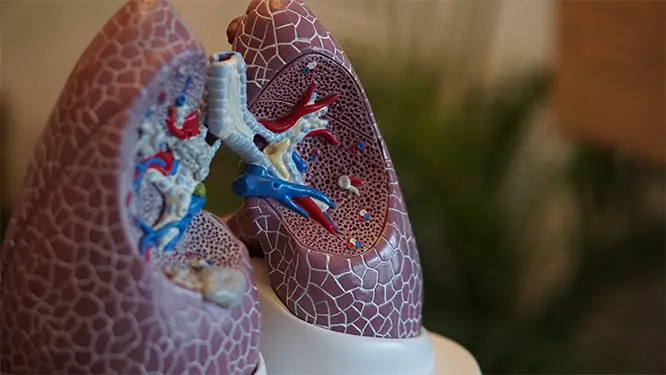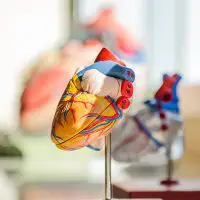Recently updated on May 19th, 2024 at 07:22 pm
Not all lung cancers can be prevented. However, there are many steps you can take to lower your risk of developing this dangerous disease. With people living longer and the smoking rates increasing simultaneously, the chances of developing lung cancer are higher than ever before.
Making healthy and positive changes to your lifestyle and routines, like eliminating smoking or exposure to secondhand smoke, increasing physical exercise and eating a balanced diet, and learning practical ways on how to quit vaping, will help you lead a longer, healthier life.

The Growing Risk of Lung Cancer
The risk of developing lung cancer has steadily increased for both men and women since the 1970s. In the U.S., it is the leading cause of cancer death in both men and women. Prolonged smoking habits are the leading cause of lung cancer, as the repetitive abuse of the lungs leads to the growth of cancer cells.
Secondhand smoke exposure also increases your chances of developing severe health issues, including lung cancer. But smoking is not the only factor that can lead to developing this deadly disease, and ensuring you are correctly informed is vital to maintaining your health.
Avoid Tobacco
According to the American Cancer Society, smoking is one of the most significant factors in increasing your risk of lung cancer. Smoking is the leading risk factor for small cell lung cancer and non-small cell lung cancer.
Kicking your smoking habit is the best way to prevent lung cancer. It is a difficult habit to break and can take multiple failed attempts to finally achieve, but it is the most crucial step you can take in reducing your risks. But be aware a history of smoking will still increase your chances of this terrible disease.
After you quit, it is strongly recommended that you get a low-dose CT scan, which can help find any traces of lung cancer early, when it is the most treatable, should these traces exist. Additionally, you will have increased energy, lower chances of a stroke and a decreased chance of developing any type of cancer.
If you have never smoked before, don’t start. It is one of the best decisions you can make for yourself and those around you.
Screen for Radon Gas
Radon is a radioactive gas resulting from uranium naturally breaking down in soil, water and rock. It is odourless and invisible and can easily seep into your home through cracks in the foundation and other openings throughout your property.
This gas can build up to high levels inside homes and other buildings without detection, and exposure to it has been linked to lung cancer. If you live in an area known to have high levels of this dangerous gas, it is essential to regularly test your home for its presence.
There are many at-home tests available for purchase online, and should your home test positive, you can hire a radon mitigation specialist who will assist you in the necessary steps to remove this danger from your home.
Embrace a Healthy Lifestyle
Research suggests that eating a low-fat, high-fibre diet with at least five balanced portions of fresh fruit and vegetables, whole grains and lean protein can reduce your risk of cancer, including lung cancer and heart disease.
In addition, engaging in at least 30 minutes of moderate-intensity aerobic activity four to five times a week can make a massive difference in your body’s ability to remain healthy and work efficiently. These types of activities include walking, running, swimming, biking or rollerblading.
If you are unable to achieve this level of exercise, as little as 10 minutes a day of activity can still carry many benefits. Any type of physical exercise can help to control your weight, reduce the risk of heart disease and stroke and improve your overall physical and mental health.
Furthermore, regular exercise helps to strengthen your lungs, allowing them to work more efficiently. It will also help to reduce inflammation throughout the body and builds your immune system, an essential tool in preventing serious health issues like lung cancer.
Understand Your Family History
If your family has a history of cancer, you are automatically at a higher risk of developing it yourself. As few as one family member having lung cancer will increase your chances of having the same disease.
Exploring your family history, genetic conditions and having the necessary screenings for lung cancer are all proactive ways to get ahead of potential risks down the line. Four main conditions carry greater chances of developing into severe and potentially deadly health issues.
The BRCA1 or BRCA2 gene mutations, Lynch syndrome, RECA and CHEK2 can all lead to the development of various types of cancer, including lung, breast, colon and prostate cancer. Consult your doctor about the necessary steps you must take to test for them.
Reduce Secondhand Smoke Exposure
You should reduce and eliminate your exposure to secondhand smoke as much as possible. When you inhale cigarette smoke, even as a non-smoker, you expose your body to over 7,000 harmful chemicals, many of which are known carcinogens.
Secondhand smoke is a combination of the smoke that comes from a burning cigarette and the smoke out of a person’s mouth. This deadly combination can damage your lung cells and increase the risk of cancer cells.
If you live with a smoker, try to establish a smoke-free environment within your home. It is a surefire way of protecting yourself and your family from the harmful effects of this dangerous habit. When out in public, avoid places that are designated smoking zones and establishments that allow for indoor smoking.



